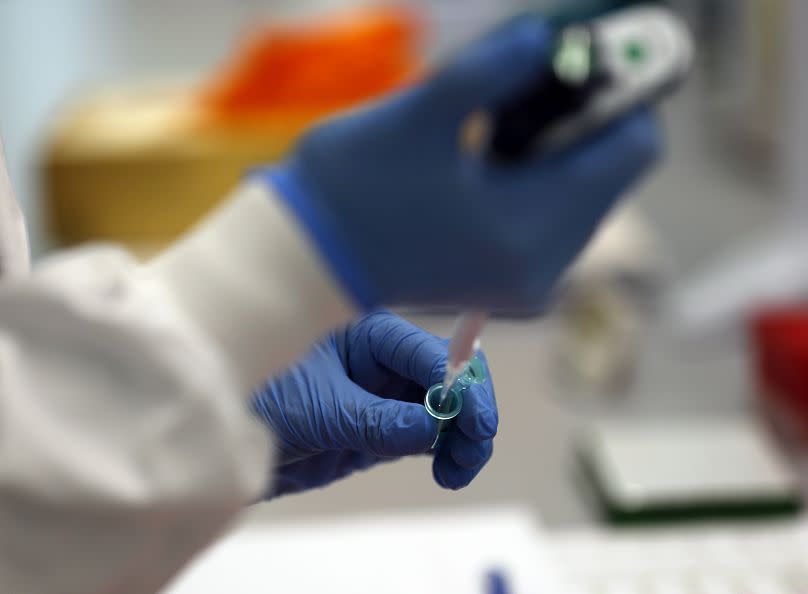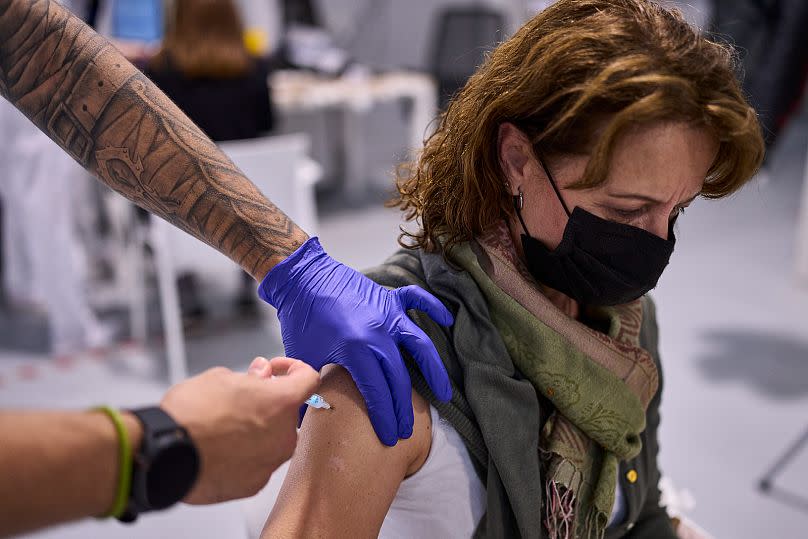Although the peak of the pandemic is over, the virus that causes COVID-19 continues to mutate, with multiple variants circulating in every country.
However, as testing and inspections decrease, experts urge people to continue to take the threat of this disease seriously.
“The world has gotten over Covid-19, and in many ways that’s good because people can protect themselves and keep themselves safe, but this virus hasn’t gone anywhere. It’s circulating. It’s changing, it’s killing, and we have to keep doing that.” Maria Van Kerkhove, technical lead for Covid-19 at the World Health Organization (WHO), told Euronews Next:
What are some of the most common COVID variants today?
All variants circulating today are sublineages of Omicron, a highly contagious COVID-19 variant that first emerged two years ago.
A subgenus, EG.5, also known as Eris, representing more than half of the COVID-19 variants currently circulating globally. It was declared a variant of concern by the WHO in August.
EG.5 cases increased over the summer but were recently overtaken by a closely related subvariant in the United States. HV.1. This subvariant now accounts for 29 percent of COVID-19 cases in the United States, according to the latest figures from the Centers for Disease Control and Prevention (CDC).
“HV.1 is a variant derived mainly from EG.5.1 (and previously XBB.1.5) that has accumulated several mutations that allow it to better infect people with immunity to SARS-CoV-2,” said Professor Andrew Pekosz. . Speaking to Euronews Next, Dr. from the department of molecular microbiology and immunology at Johns Hopkins University in the USA.
Pekosz, who studies the replication of respiratory viruses, said these variants likely emerged as random mutations as part of the natural evolution of viruses.
According to the European Centers for Disease Control and Prevention (ECDC), XBB 1.5-like variants such as EG.5 or Eris are currently dominant, accounting for approximately 67 percent of cases in EU/EEA countries.

Prevalence of another Omicron sublineage BA.2.86 It is “slowly increasing globally,” according to the WHO, which recently classified it as a “variant of concern.” Their series was first reported in Israel and Denmark in July and August.
“BA.2.86 was something that really worried scientists when it emerged because it was a variant with a large number of mutations, particularly in the spike protein, which is the target of protective immunity provided by vaccines and infections,” Pekosz said.
Scientists think this variant likely originated in a person with a weakened immune system, which allows the virus to replicate more quickly and accumulate mutations, but it is not yet close to becoming dominant.
But French officials have recently said that most BA.2.86 cases in the country are of a new JN.1 subtype that has been “detected in other countries but is circulating mainly in Europe and especially France.”
It appears to have more mutations that make it more contagious, Pekosz said.
Should we be worried about new variants of COVID?
RNA viruses, such as SARS-CoV-2, which causes COVID-19, are known to pick up mutations faster than other viruses because “they make more mistakes and don’t have the ability to correct those mistakes,” according to Pekosz.
SARS-CoV-2 and its spike protein also appear to tolerate many mutations, similar to what scientists see in flu.
However, so far, although scientists have paid attention to these mutations, they cannot see any change in the severity of the disease, and the tests we use still detect the virus.
These new variants will continue to emerge and “continue to contribute to hospitalizations and even deaths for the most vulnerable in society, particularly those with certain underlying health conditions,” said Andrew Pollard, professor of infection and immunity at the University of California. Oxford.
But Pollard doesn’t expect them to “restart a pandemic” as there is strong immunity from vaccination and previous infection around the world.
New Covid-19 families “probably form through mutation” but none “as successful as the dominant Omicron variants,” he said. “At least for now”.


The worst-case scenario could be a new variant that spreads faster and causes more severe disease for which vaccines do not work.
“We’re not taking anything for granted. We have different scenarios planned in terms of variants and their detection,” said Van Kerkhove, who is also WHO’s interim director for epidemic and pandemic preparedness and prevention.
Reductions in testing and surveillance ‘challenging’
Currently, these variants are not causing a major new increase in cases or hospitalizations, and although experts say there is still enough sequencing to detect emerging variants, those efforts have diminished.
“What we’ve lost recently is the ability to truly understand the full range of diversity that exists in these virus populations,” Pekosz said.
Van Kerkhove encouraged people to continue getting tested if they think they have Covid-19, as this allows scientists to track the virus and then sequence it to look for possible mutations.
“If you don’t get tested, you can’t get sequenced,” he said.
He added that reductions in testing and sequencing, as well as increased delays in receiving data, “have been very challenging for us and have slowed down our ability to assess risk for each of these subvariants.”
Most importantly, even as the world moves forward, experts recommend people get vaccinated, wear masks in crowds or around people at high risk of severe COVID-19, and get tested to prevent further spread of the disease.